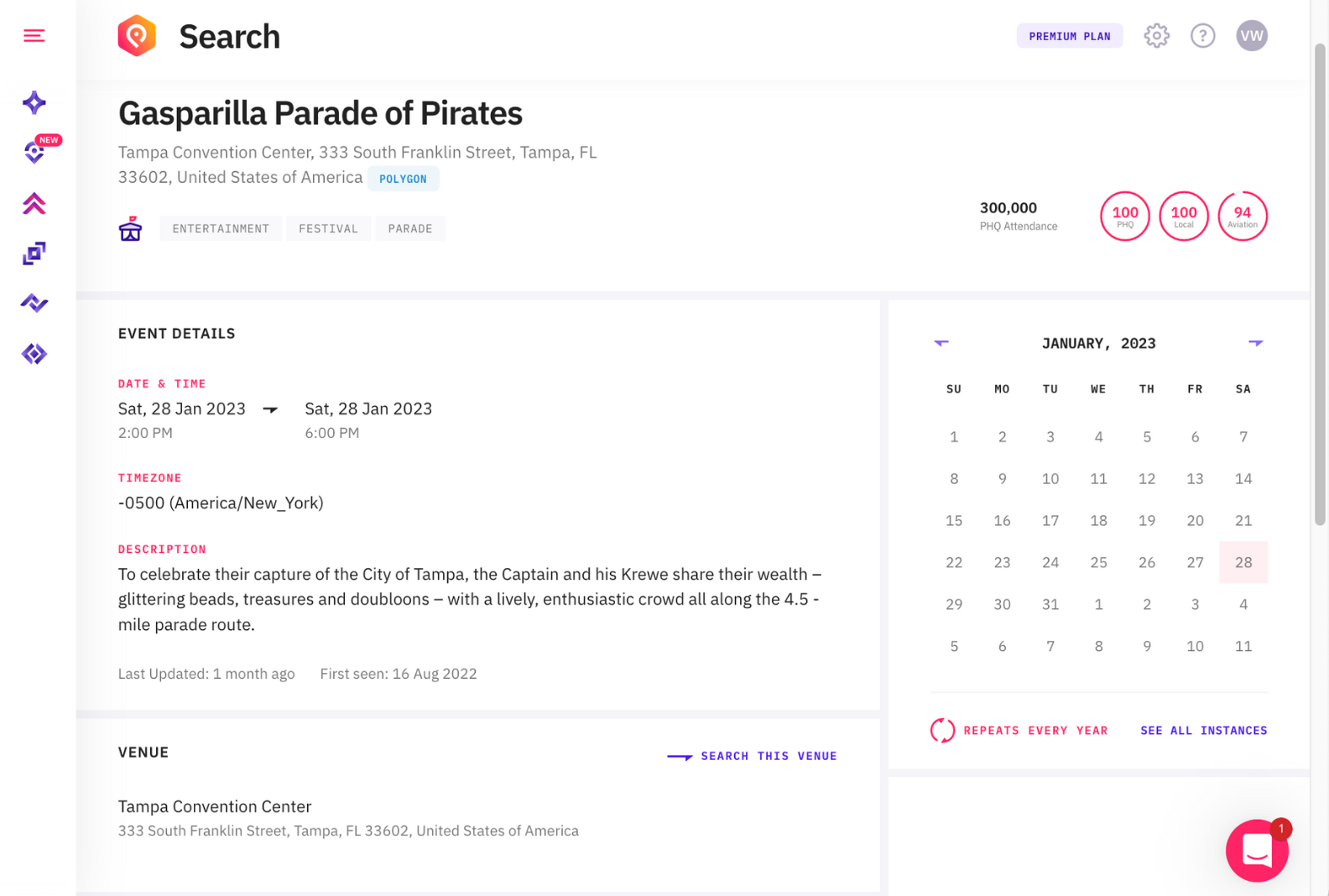Why the current macro environment calls for awareness of real-world events

Global macro environmental trends call for demand forecasts with solid awareness of real-world events
For most industries, the macro economic environment remains as volatile and unpredictable as it did during the darkest days of the pandemic. However, with attended events back in full force across the globe, we’re seeing yet another shift in consumer behavior. This time, the container spot rate is down, meaning people are buying less products – and there’s a heightened demand for travel and experiences.
For example in 2021, The Outside Lands Festival is a single event that attracted 220,000+ attendees that drove $71.3M in new economic activity in San Francisco, which aligns with the event’s 2017 figures, adjusted for inflation. Despite inflation, it’s no surprise that after essentially being locked down for 2+ years, 74% of consumers value experiences over products. Read on to find out how companies are using dynamic event data to adjust to these changes in real time.
Why is demand hypersensitive right now?
It seems the world is waking up from dealing with COVID, has one heck of a headache, and is now in an environment which is even more hypersensitive to demand fluctuations – due to the ongoing pressures of inflation, labor shortages, and supply chain.
Now more than ever, if a restaurant is going to experience a spike in demand, they need to have the right amount of staff scheduled, and enough inventory. Getting this wrong results in not having enough staff on hand to yield, or conversely, too many staff on the schedule, and not enough demand. According to the U.S. Bureau of Labor Statistics, labor costs for civilian and private industry workers has increased by 5% in 2022– making staffing mistakes more costly right now.
Due to supply chain issues caused by COVID, the estimated value for out-of-stock items in 2020 was $1.14 trillion. While adjusting to these lingering elements of the pandemic, forecasting efforts for most businesses have proven their models only really adapt to seasonality and historical transactions.
For example, as the economy continues to recover, operations teams are noticing:
They have no or limited visibility into category-level data such as sports, live TV events, expos, and conferences.
They need to better understand the rotation of recurring events – for example, a conference may be hosted in Orlando one year, then San Diego the next year, then Atlanta, and so on. Taking all the positive economic impact with them.
They have no idea how to plan for new events around their stores, hotels, or restaurants – or for events leaving these areas.
They need better data to drive business development such as site selection, as this takes significant capital and can be an expensive mistake.
Labor costs remain high, meaning it’s business-critical to identify demand to scale up staff and yield accordingly with as little wastage as possible.
Navigating these issues leaves little time for businesses to adapt, which is why large tech companies are using event data to make their forecasts real-world aware. In fact, demand forecasting has become mainstream with leading cloud companies – including PredictHQ partners – launching large-scale demand forecasting platforms over the past several years:
Snowflake launched SnowPark in July 2022
AWS launched AWS Forecast in November 2018
BCG launched Lighthouse in August 2020
Google launched Vertex AI in December 2021
Make your demand forecasting models real-world aware
Every single one of these platforms needs to adapt to the real world. PredictHQ = events + intelligence + features. Without our signals, businesses are adapting to autumn, but forgetting there will be 300,000 people within 0.5 miles of their store tomorrow.

Discover which event categories impact your demand, so you can turn demand anomalies into competitive advantage. Combine your historical data with PredictHQ’s seven years of forecast-grade event data, and use our API in forecasting to reduce costly errors.






